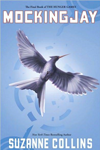
Search
Categories
Famous Authors
Top Selling Books

Book Home ![]() Books Information
Books Information ![]() Shadow
Shadow
Shadow
A shadow is a dark shape, e.g. on the ground or a wall, caused by an object (or person, etc.) blocking light. Like a silhouette, the shape of the shadow is a two-dimensional projection of the object, but:
the smaller the angle between an elongated object and the direction of the light is, the shorter the shadow is;
the smaller the angle between the direction of the light and the surface on which the shadow occurs is, the longer the shadow is;
if the object is close to the light source, the shadow is large.
If the surface is curved there are further distortions.
For non-point sources of light, the shadow is divided into the umbra and penumbra. The wider the light source, the more blurred the shadow.
If there are multiple light sources there are multiple shadows, with overlapping parts darker. For a person or object touching the surface, like a person standing on the ground, or a pole in the ground, these converge at the point of touch.
If white light is produced by separate colored light sources, the shadows are colored.
A shadow cast by the Earth on the Moon is a lunar eclipse. Conversely, a shadow cast by the Moon on the Earth is a solar eclipse.
It is also true that shadows can travel faster than the speed of light. A shadow 'moves' faster than the object that casts it. If the object is moving at near lightspeed, its shadow can move faster than the speed of light. However, shadows cannot carry information so this phenomenon does not disobey general relativity.
On satellite imagery and aerial photographs, taken vertically, tall buildings can be recognized as such by their long shadows (if the photographs are not taken in the tropics around noon) , while these also show more of the shape of these buildings.
A shadow shows, apart from distortion, the same image as the silhouette when looking at the object from the sun-side, hence the mirror image of the silhouette seen from the other side (see picture).
The term shadow is also used with regard to other things than light, for example rain: a rain shadow is a dry area, which, with respect to the prevailing wind direction, is beyond a mountain range; it is dry because air masses lose part of their water when they move over these mountains.
Fiction
In Peter Pan the main character loses his shadow: it snaps off when he leaps out of the window, which is slammed closed behind him. It is put in a drawer and later sewed back on by Wendy.
In many fantasy games, shadow is widely referred to as the source of dark arts and black magic. Shadows, mainly in this genre, are said to be the departed souls of people that have had their lives tragically cut short or did not receive acceptance in heaven or hell.
In Roger Zelazny's novel Jack of Shadows, the main character has a unique ability to manipulate shadows magically.
In the Chronicles of Amber series of novels (also by Zelazny), Shadow is a metaphysical substance in which all possible universes can exist, if a person who meets certain criteria desires to go to them.
Heraldry
In heraldry, when a charge is supposedly shown in shadow (the appearance is of the charge merely being outlined in a neutral tint rather than being of one or more tinctures different from the field on which it is placed), it is called umbrated. Supposedly only a limited number of specific charges can be so depicted.